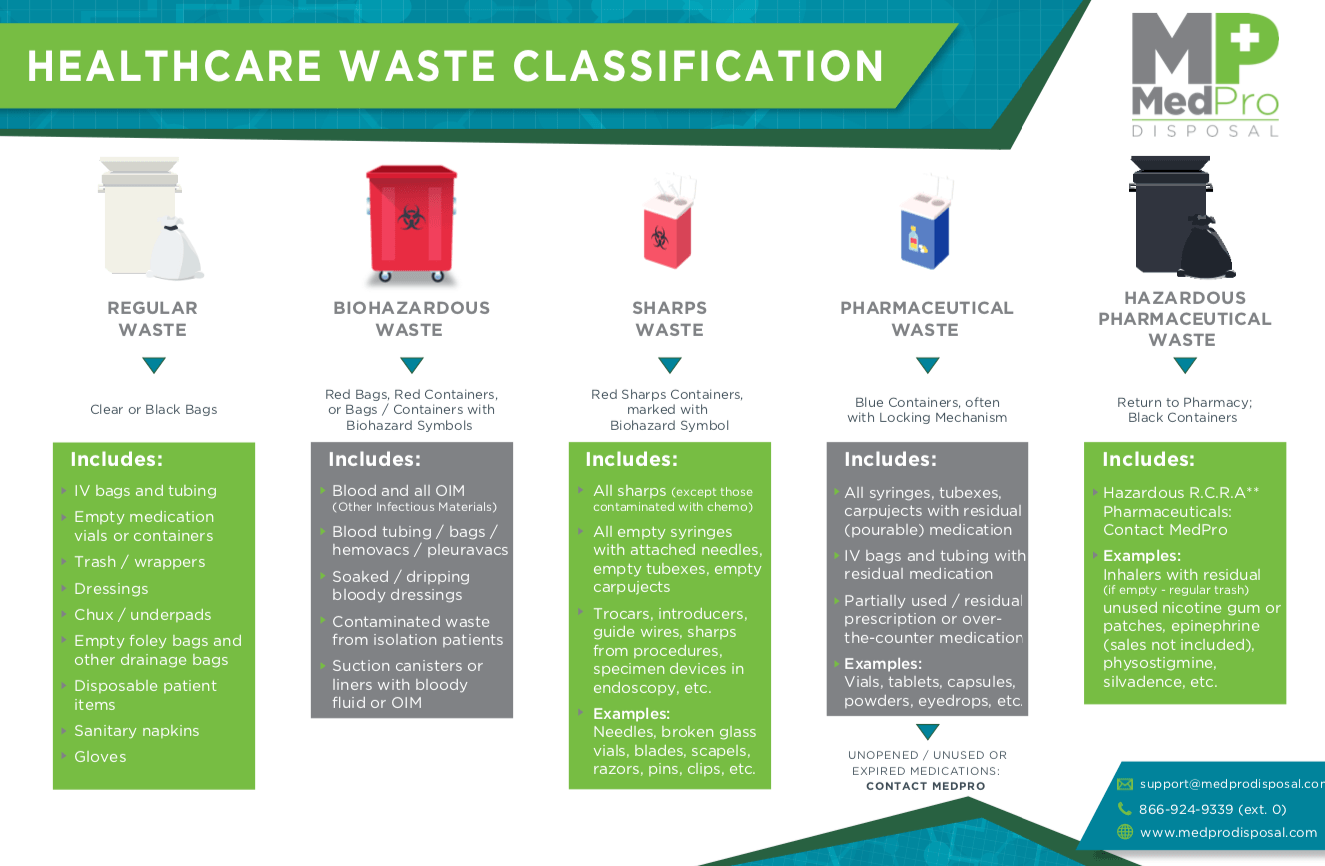Expertise Unleashed: Understanding the Art of Medical Waste Removal for Wellness Facilities
Expertise Unleashed: Understanding the Art of Medical Waste Removal for Wellness Facilities
Blog Article
Discovering Various Garbage Disposal Options for a Cleaner Setting
In the quest of a cleaner setting, the administration of waste disposal has become a crucial focal factor for lasting growth. With a multitude of garbage disposal choices readily available, ranging from typical land fill methods to ingenious waste-to-energy modern technologies, the choice of how we manage our waste has significant ramifications for our planet's well-being. By analyzing the different techniques and strategies employed in recycling, composting, incineration, land fill administration, and waste-to-energy procedures, a deeper understanding of their impacts and performance can be gained. The pursuit for optimal waste disposal techniques that focus on environmental preservation while meeting the requirements of an expanding populace stays a pushing issue in today's world.
Recycling Techniques
Implementing efficient reusing approaches is essential in decreasing waste and promoting sustainability in our environment. Recycling involves the process of converting waste materials into reusable objects to protect against unneeded disposal. Among one of the most typical recycling techniques is material recovery, where products like paper, steel, glass, and plastic are gathered, arranged, and processed to develop brand-new items. This process not only saves natural deposits but also decreases power intake and greenhouse gas discharges connected with generating brand-new products from the ground up.
An additional vital recycling technique is composting, which involves disintegrating natural waste like food scraps and backyard trimmings into nutrient-rich dirt. This procedure not only diverts natural waste from landfills but likewise creates a valuable resource for horticulture and farming. Furthermore, upcycling is a creative recycling technique that involves changing old or thrown out products right into products of higher top quality or value. By incorporating these different recycling methods right into our waste monitoring techniques, we can dramatically minimize our ecological impact and move in the direction of a much more sustainable future.

Composting Methods
Effective waste administration methods, such as recycling approaches, pave the way for a cleaner setting, and currently, changing the emphasis to 'Composting Techniques', we explore lasting means to break down organic waste for ecological benefit. medical waste removal.
Composting is an all-natural process that transforms organic waste, like food scraps and yard trimmings, right into a nutrient-rich soil change. The trick to successful composting depends on creating the best balance of green materials, such as vegetables and fruit scraps, and brown materials, like dried branches and fallen leaves. These materials break down with the aid of microorganisms, breaking down the waste right into important garden compost.
Standard yard composting includes layering natural products in a container or heap and regularly turning the combination to aerate it. By utilizing composting strategies, we can lower the quantity of waste sent to landfills while producing an advantageous product for improving soil and supporting plant growth.
Incineration Disadvantages and pros
Incineration, as a waste disposal method, presents both advantages and disadvantages that warrant mindful consideration in the world of sustainable waste monitoring techniques. On the favorable side, incineration can dramatically reduce the quantity of waste, lessening the demand for landfill room and possibly decreasing greenhouse gas emissions.
In addition, the high first financial investment and functional expenses of incineration centers position economic challenges, making it a much less economical choice contrasted to other waste administration techniques. Careful monitoring and policy are important to mitigate these adverse influences and make the most of the advantages of incineration as component of an extensive waste management strategy.
Land Fill Management Approaches
Land fills play a vital role in waste administration and environmental preservation by providing a containment system for the disposal of solid waste materials. By condensing the waste, the quantity is reduced, allowing for even more waste to be suited over time.
Additionally, the execution of daily cover practices is vital in minimizing smells, avoiding clutter, and decreasing the attraction of bugs. Treatment the disposed waste at the end of each day helps to consist of smells and stop prospective environmental contamination. Furthermore, the tracking of garbage dump gas discharges and leachate levels is critical in making sure that ecological requirements are satisfied and that any type of possible risks to surrounding ecological communities are minimized.

Waste-to-Energy Technologies
One of the ingenious techniques to squander monitoring entails harnessing Waste-to-Energy modern technologies to convert solid waste right into usable energy sources. Waste-to-Energy (WtE) technologies encompass a variety of procedures that intend to extract power from waste materials with thermal, chemical, or biological ways. This conversion process not only decreases the quantity official statement of waste that winds up in landfills however additionally generates important energy sources such as electricity, warmth, or biofuels.
There are several techniques of Waste-to-Energy conversion, consisting of pyrolysis, incineration, and gasification. Incineration includes shedding waste at high temperature levels to produce warm and electricity. Gasification converts waste right into a syngas, which can be utilized for power generation or chemical production. Pyrolysis breaks down organic materials making use of high temperature levels in the lack of oxygen, producing char, bio-oil, and gas.
Executing Waste-to-Energy innovations can assist mitigate environmental problems related to traditional garbage disposal methods while simultaneously offering a renewable resource source. Nevertheless, mindful consideration has to be offered to discharges control and ensuring the sustainability of feedstock materials for these modern technologies to be genuinely helpful for a cleaner setting.

Verdict
Finally, discovering different waste disposal choices such as recycling, composting, incineration, land fill monitoring, and waste-to-energy modern technologies is necessary for promoting a cleaner environment - click here. Each method has its very own benefits and challenges, but by utilizing a combination of these methods, we can work in the direction of reducing the quantity of waste that winds up in landfills and eventually add to an extra lasting future for generations to find
With a wide variety of waste disposal options available, varying from traditional landfill techniques to ingenious waste-to-energy technologies, the option of how we handle our waste has far-ranging ramifications for our earth's wellness. medical waste removal service.Incineration, as a waste disposal technique, presents both benefits and negative aspects that merit mindful consideration in the world of sustainable waste monitoring techniques.Landfills play a crucial role in waste administration and environmental conservation by offering a containment system for the disposal of solid waste materials. By compacting the waste, the volume is reduced, permitting for even more waste to be suited over time
One of the innovative methods to squander administration includes harnessing Waste-to-Energy innovations to transform solid waste into usable power resources.
Report this page